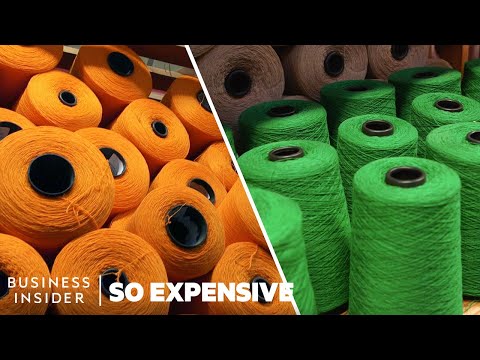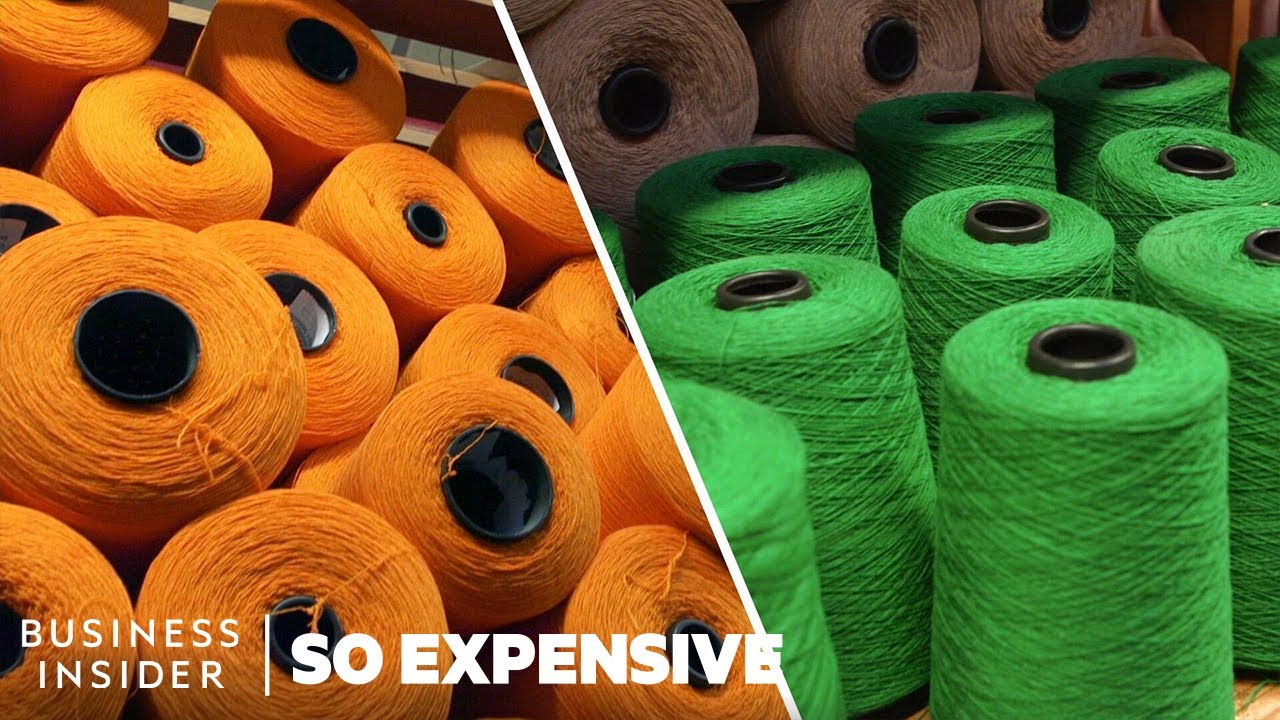Cashmere wool fabric is the epitome of luxury and indulgence, a textile that embodies elegance and sophistication. Derived from the soft undercoat of cashmere goats, this exquisite fabric is renowned for its unparalleled softness, warmth, and unmatched quality. Every touch of cashmere against your skin is a gentle caress, a sensory experience that envelops you in a world of pure comfort and bliss. The supreme softness of cashmere provides a delicate and plush feel, elevating any garment or accessory it adorns to a realm of sheer opulence. Its natural insulating properties make it the perfect companion for colder seasons, embracing you in a cocoon of warmth while still allowing your skin to breathe. Moreover, cashmere wool fabric is renowned for its exceptional durability, ensuring that your cherished pieces will stand the test of time without compromising on style or comfort. Whether it’s a cozy sweater, an elegant scarf, or a luxurious throw blanket, cashmere wool fabric adds a touch of sophistication and refinement to any ensemble. Fall in love with the luxurious softness, unparalleled warmth, and enduring quality of cashmere wool fabric, and indulge yourself in the ultimate expression of timeless elegance.

2023 Trending Cashmere Wool Fabric
| Property | Description |
|---|---|
| Fiber Origin | Cashmere wool is derived from the soft undercoat of cashmere goats, primarily found in regions like Mongolia, China, Iran, and Afghanistan. |
| Superior Softness | Cashmere wool is renowned for its unmatched softness, often described as luxurious and silky. Its fine fibers provide a delicate and cozy feel against the skin. |
| Insulating Properties | One of the most remarkable characteristics of cashmere wool is its exceptional insulating capabilities. It has natural thermoregulatory properties, keeping the wearer warm in cold climates and cool in warmer temperatures. |
| Lightweight | Despite its excellent insulation, cashmere wool is incredibly lightweight, making it an ideal choice for garments that provide warmth without bulkiness. |
| Durability | While being delicate to the touch, cashmere wool is surprisingly durable. When cared for properly, it can last for many years, making it a valuable investment for your wardrobe. |
| Color Retention | Cashmere wool has excellent color retention properties, allowing it to maintain its vibrant hues over time. This characteristic enhances the longevity and beauty of cashmere garments. |
| Versatility | Due to its unique combination of softness, warmth, and lightweight nature, cashmere wool is highly versatile. It can be used to create various garments such as sweaters, scarves, shawls, and even accessories like hats and gloves. |
| Environmental Sustainability | Cashmere wool is a renewable and biodegradable fiber, making it an eco-friendly choice. Additionally, many ethical brands prioritize responsible sourcing and animal welfare in their cashmere production. |
As an expert in cashmere wool fabric, I can confidently say that it continues to be a trending material in 2023. Cashmere wool’s unique properties make it highly sought after by fashion enthusiasts and those who appreciate premium quality textiles. With its superior softness, exceptional insulation, and lightweight nature, cashmere wool offers a luxurious and comfortable experience like no other fabric.
Originating from the undercoat of cashmere goats, primarily found in Mongolia, China, Iran, and Afghanistan, cashmere wool is carefully harvested and processed to ensure its exquisite quality. Its fine fibers provide a delicate and cozy feel against the skin, creating a truly indulgent wearing experience.
One of the key reasons behind cashmere wool’s popularity is its remarkable insulating properties. This natural thermoregulatory feature allows wearers to stay warm in cold climates and cool in warmer temperatures. Despite its excellent insulation, cashmere wool remains incredibly lightweight, making it an ideal choice for those seeking warmth without the bulkiness associated with other fabrics.
Durability is another notable aspect of cashmere wool. Though it may seem delicate, when cared for properly, cashmere garments can last for many years. This durability, combined with the fabric’s ability to retain vibrant colors, enhances the longevity and beauty of cashmere garments.
The versatility of cashmere wool is unmatched. It can be used to create a wide range of garments, from sweaters and scarves to shawls and accessories like hats and gloves. Its luxurious feel and timeless appeal make cashmere a staple in any fashion-forward wardrobe.
Furthermore, cashmere wool aligns with the growing demand for environmentally sustainable choices. Being a renewable and biodegradable fiber, cashmere wool offers an eco-friendly alternative to synthetic materials. Many ethical brands prioritize responsible sourcing and animal welfare in their cashmere production, ensuring a conscious and ethical choice for consumers.
In conclusion, cashmere wool fabric’s popularity continues to rise in 2023. Its exceptional softness, insulation, lightweight nature, and durability make it a highly coveted material. With its versatility and environmental sustainability, cashmere wool is undoubtedly a trendsetter in the fashion industry.
The Luxurious Mystery of Cashmere’s Price Tag
The Luxurious Elegance of Cashmere Wool Fabric
Cashmere wool fabric is a renowned textile known for its unparalleled softness, warmth, and luxury. Derived from the undercoat of cashmere goats, this fabric has been cherished for centuries for its exceptional quality and comfort. In this article, we will explore the fascinating characteristics, history, production, care, and popularity of this exquisite fabric.
The Characteristics of Cashmere Wool Fabric
Softness: One of the most remarkable features of cashmere wool fabric is its incredible softness. The fibers are incredibly fine, measuring just 14-19 microns in diameter, which is significantly smaller than human hair. This results in a fabric that feels luxuriously soft and gentle against the skin.
Warmth: Cashmere wool fabric provides exceptional warmth, making it a popular choice for winter garments. The fibers have excellent insulation properties, trapping heat close to the body and keeping you cozy even in the coldest of temperatures.
Durability: Despite its delicate and lightweight nature, cashmere wool fabric is surprisingly durable. The fibers have a natural elasticity that allows them to resist stretching and retain their shape over time. With proper care, cashmere garments can last for decades, making them a worthwhile investment.
The History and Production of Cashmere Wool Fabric
Origin: Cashmere wool fabric has a rich history that dates back thousands of years. It originated in the region of Kashmir, located in present-day India and Pakistan. The ancient Kashmiri people discovered the exceptional softness and warmth of cashmere goat fibers and began weaving them into luxurious fabrics.
Production Process: The production of cashmere wool fabric is a meticulous and time-consuming process. Each spring, cashmere goats naturally shed their winter undercoat, which is then collected through a process called combing. The collected fibers are then sorted by hand, separating the high-quality cashmere from coarser hairs.
Spinning and Weaving: After sorting, the cashmere fibers are spun into yarn using traditional spinning wheels or modern machines. This yarn is then carefully woven into fabric by skilled artisans using looms. The weaving process requires precision and expertise to create the delicate and intricate patterns often associated with cashmere garments.
Caring for Cashmere Wool Fabric
Hand Washing: Cashmere wool fabric requires special care to maintain its softness and longevity. It is recommended to hand wash cashmere garments using a gentle detergent and lukewarm water. Avoid wringing or twisting the fabric, as this can cause damage. Instead, gently squeeze out excess water and lay the garment flat to dry.
Storage: When storing cashmere wool fabric, it is crucial to protect it from moths and other pests. Clean the garment thoroughly before storing and place it in a sealed storage bag or container. Adding moth repellents such as lavender sachets or cedar blocks can further safeguard your cherished cashmere items.
Pilling: Pilling, the formation of small balls of fabric on the surface, is a common occurrence with cashmere wool fabric. To prevent pilling, avoid wearing cashmere garments with rough or abrasive materials, and gently remove any pills that do form using a fabric shaver or a cashmere comb.
Popularity and Versatility of Cashmere Wool Fabric
High Fashion: Cashmere wool fabric has long been associated with luxury and high fashion. Renowned fashion houses and designers frequently incorporate cashmere into their collections, showcasing its timeless elegance and sophistication.
Everyday Wear: While cashmere wool fabric is often associated with formal and special occasions, it has also become increasingly popular for everyday wear. Cashmere sweaters, scarves, and accessories are versatile pieces that can elevate any outfit, adding a touch of refinement and cozy comfort.
Sustainability: In recent years, there has been a growing demand for sustainable and ethical fashion choices. Cashmere wool fabric, when produced responsibly, can be a sustainable option. Some manufacturers prioritize ethical sourcing practices, ensuring the well-being of cashmere goats and the environment.
Conclusion
Cashmere wool fabric is an extraordinary textile that exudes elegance, warmth, and comfort. Its exceptional softness, durability, and insulation properties make it a truly luxurious choice for winter garments and accessories. With proper care, cashmere garments can be cherished for generations, making them a worthwhile investment. Whether for high fashion or everyday wear, cashmere wool fabric continues to captivate people with its timeless appeal and versatility.

